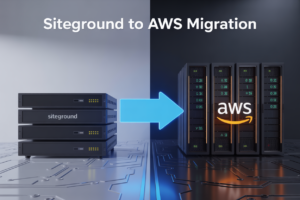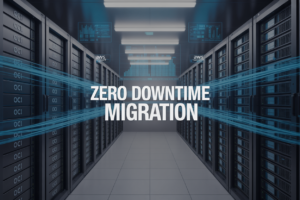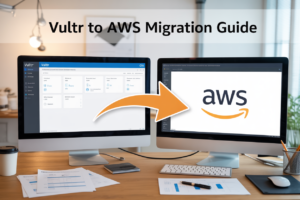Modern businesses generate massive amounts of data every second, and getting that information flowing smoothly from point A to point B isn’t as simple as it sounds. Scalable data pipelines have become the backbone of successful data-driven organizations, transforming raw information into actionable insights that drive real business decisions.
This guide is designed for data engineers, software architects, and technical leaders who need to build robust systems that can handle growing data volumes without breaking down. You’ll also find value here if you’re a developer transitioning into data engineering or a team lead evaluating your current data pipeline architecture.
We’ll walk through the essential architecture components that make pipelines truly scalable, from ingestion layers to storage solutions. You’ll discover the most common scalability challenges that catch teams off guard – like handling sudden traffic spikes and managing data consistency across distributed systems. Finally, we’ll cover proven best practices for pipeline design that successful companies use to build systems that scale effortlessly, including smart partitioning strategies and monitoring approaches that actually work in production.
By the end, you’ll have a clear roadmap for building data pipeline architecture that grows with your business needs rather than against them.
Understanding Data Pipeline Fundamentals
Define data pipelines and their core components
Scalable data pipelines serve as automated workflows that move, transform, and process data from multiple sources to target destinations. These systems consist of four essential components: data ingestion layers that collect information from various sources, processing engines that clean and transform raw data, storage systems that house both intermediate and final datasets, and orchestration tools that manage workflow scheduling and dependencies. Modern data pipeline architecture incorporates monitoring capabilities and error handling mechanisms to ensure reliable data flow across distributed systems.
Identify key benefits of implementing scalable data pipelines
Organizations implementing scalable data processing systems experience significant operational advantages. These pipelines automate repetitive data tasks, reducing manual intervention and human error while enabling teams to focus on higher-value analytics work. They provide consistent data quality through standardized transformation processes and ensure reliable data delivery even during peak loads. Scalable data pipelines support business growth by handling increasing data volumes without requiring complete system redesigns, while offering improved data governance through centralized processing controls and audit trails.
Recognize the difference between batch and real-time processing
Batch processing handles large data volumes during scheduled intervals, typically processing historical data in chunks for reporting and analytics purposes. This approach offers cost-effectiveness and high throughput but introduces latency between data generation and availability. Real-time data pipelines process information immediately as it arrives, enabling instant decision-making and live monitoring capabilities. Streaming architectures handle continuous data flows with minimal delay, making them ideal for fraud detection, recommendation engines, and operational monitoring where immediate insights drive business value.
Understand data flow patterns and pipeline stages
Data pipeline design patterns follow structured stages that ensure efficient information processing. The extraction phase captures data from sources like databases, APIs, and file systems using various connectors and protocols. Transformation stages apply business rules, data cleaning, validation, and enrichment operations to prepare information for analysis. Loading phases deliver processed data to target systems including data warehouses, data lakes, and analytical databases. Modern pipelines incorporate feedback loops and monitoring checkpoints at each stage, enabling big data pipeline optimization through performance tracking and bottleneck identification across the entire data journey.
Essential Architecture Components for Scalable Data Pipelines
Design Data Ingestion Layers for Multiple Source Types
Building a flexible data ingestion layer requires support for diverse source systems including databases, APIs, message queues, and file systems. Event-driven architectures using tools like Apache Kafka or AWS Kinesis enable real-time streaming from multiple sources simultaneously. Batch ingestion patterns handle large volume transfers using schedulers and connectors. Schema registry services maintain data consistency across different source formats. Connection pooling and retry mechanisms ensure reliable data capture even during source system outages.
Implement Robust Data Processing and Transformation Engines
Scalable data processing engines like Apache Spark or Flink provide distributed computing capabilities for handling massive datasets. Stream processing architectures enable real-time transformations while batch processing handles complex analytical workloads. Data lineage tracking maintains visibility into transformation steps and dependencies. Fault-tolerant processing includes checkpointing and state recovery mechanisms. Auto-scaling features dynamically adjust compute resources based on workload demands, optimizing both performance and costs.
Build Efficient Data Storage and Retrieval Systems
Multi-tiered storage architectures combine hot, warm, and cold storage layers based on access patterns and retention policies. Data lakes using formats like Parquet or Delta Lake provide schema evolution and ACID transactions. Partitioning strategies optimize query performance by organizing data based on common access patterns. Compression algorithms reduce storage costs while maintaining query speed. Caching layers accelerate frequently accessed data retrieval operations.
Create Monitoring and Alerting Mechanisms
Comprehensive monitoring covers data quality metrics, pipeline performance indicators, and system health status. Real-time alerting systems notify teams of anomalies, failures, or SLA breaches through multiple channels. Data quality checks validate completeness, accuracy, and freshness at each pipeline stage. Performance dashboards track throughput, latency, and resource utilization trends. Automated remediation workflows handle common failure scenarios without manual intervention, reducing downtime and operational overhead.
Common Scalability Challenges and Pain Points
Handle increasing data volume and velocity demands
Organizations face relentless pressure as data volumes explode exponentially while processing speed requirements become more demanding. Traditional batch processing systems crumble under terabyte-scale workloads arriving in real-time streams. Legacy ETL pipeline architectures simply can’t keep pace with modern data velocity, creating bottlenecks that cascade throughout entire processing workflows. Horizontal scaling becomes critical, but many systems weren’t designed for distributed processing. Memory limitations force expensive compromises between processing speed and data completeness. Auto-scaling mechanisms often lag behind actual demand spikes, leaving pipelines overwhelmed during peak traffic periods.
Manage resource allocation and cost optimization
Cloud computing costs spiral out of control when scalable data pipelines aren’t properly managed and optimized. Resource provisioning becomes a constant balancing act between performance requirements and budget constraints. Over-provisioning wastes money on idle compute resources, while under-provisioning causes pipeline failures and SLA violations. Dynamic scaling algorithms struggle to predict resource needs accurately, leading to reactive rather than proactive scaling decisions. Storage costs compound rapidly with data retention policies that lack intelligent tiering strategies. Development teams often lack visibility into actual resource consumption patterns, making cost optimization nearly impossible without proper monitoring and analytics tools.
Ensure data quality and consistency at scale
Maintaining data integrity across distributed processing environments presents enormous challenges that compound with scale. Schema evolution breaks downstream consumers when pipeline components aren’t properly versioned and backward-compatible. Data drift occurs silently as source systems change without notification, corrupting analytical outputs for weeks before detection. Duplicate records multiply across partitioned datasets, creating inconsistencies that undermine business intelligence accuracy. Late-arriving data complicates exactly-once processing guarantees in streaming scenarios. Error handling becomes complex when failures occur across multiple processing nodes simultaneously. Quality validation rules that work fine on small datasets become performance bottlenecks when applied to massive data volumes, forcing uncomfortable trade-offs between thoroughness and speed.
Proven Best Practices for Pipeline Design
Apply modular and microservices-based architecture principles
Breaking your scalable data pipelines into smaller, independent components makes them easier to manage and scale. Each module handles a specific function—data ingestion, transformation, or storage—allowing teams to update, debug, and deploy changes without affecting the entire system. This approach reduces complexity and enables faster troubleshooting when issues arise.
Implement effective error handling and recovery strategies
Robust data pipeline design patterns require comprehensive error handling that goes beyond simple logging. Build automatic retry mechanisms with exponential backoff, implement circuit breakers to prevent cascade failures, and create dead letter queues for problematic records. Your pipeline should gracefully handle temporary outages, data quality issues, and downstream system failures while maintaining data integrity and processing continuity.
Optimize data partitioning and parallel processing techniques
Smart partitioning transforms pipeline performance by enabling parallel processing across multiple nodes. Partition data by time windows, geographic regions, or business units to distribute workloads evenly. This scalable data processing approach reduces bottlenecks and allows your system to handle increasing data volumes. Choose partitioning strategies that align with your query patterns and processing requirements for maximum efficiency.
Establish comprehensive testing and validation frameworks
Data pipeline testing requires multiple layers: unit tests for individual components, integration tests for system interactions, and end-to-end validation of complete workflows. Create automated data quality checks that verify schema compliance, detect anomalies, and validate business rules. Include performance testing to ensure your pipeline meets throughput requirements under various load conditions and data scenarios.
Design for fault tolerance and disaster recovery
Building resilient data pipeline architecture means preparing for failures at every level. Implement checkpoint mechanisms that allow processing to resume from the last successful state. Use multiple availability zones, maintain backup systems, and create automated failover procedures. Your disaster recovery plan should include data backup strategies, system restoration processes, and clear communication protocols for incident response.
Technology Stack Selection and Implementation
Choose appropriate message queuing and streaming platforms
Apache Kafka stands out as the gold standard for real-time data streaming, handling millions of messages per second with low latency. For simpler use cases, Amazon SQS or RabbitMQ provide reliable message queuing without complex cluster management. Apache Pulsar offers multi-tenancy and geo-replication features that Kafka lacks. Cloud-managed options like Azure Service Bus and Google Cloud Pub/Sub eliminate infrastructure overhead while providing automatic scaling. The choice depends on throughput requirements, message ordering needs, and operational complexity tolerance.
Select optimal data processing frameworks and engines
Apache Spark dominates batch processing with its in-memory computing capabilities, while Apache Flink excels at low-latency stream processing with exactly-once semantics. For SQL-heavy workloads, Apache Beam provides unified batch and stream processing with multiple execution engines. Databricks and Snowflake offer managed solutions that handle infrastructure complexity. Consider Apache Storm for simple event processing or Kubernetes-native frameworks like Apache Airflow for workflow orchestration. Modern alternatives include dbt for analytics engineering and Prefect for dataflow automation.
Implement cloud-native solutions for automatic scaling
Kubernetes enables containerized data pipeline deployments with horizontal pod autoscaling based on CPU, memory, or custom metrics. AWS Lambda and Google Cloud Functions provide serverless compute for event-driven processing without managing infrastructure. Container orchestration platforms like EKS, GKE, and AKS offer managed Kubernetes with built-in autoscaling capabilities. Implement Infrastructure as Code using Terraform or CloudFormation for reproducible deployments. Leverage cloud-native monitoring with Prometheus, Grafana, and service meshes like Istio for observability and automatic scaling decisions.
Performance Optimization and Monitoring Strategies
Track Key Performance Indicators and Pipeline Metrics
Monitor throughput rates, data latency, error rates, and resource consumption across your scalable data pipelines. Set up dashboards tracking records processed per second, memory usage, CPU utilization, and queue depths. Establish alerts for threshold breaches and track SLA compliance to maintain optimal performance standards.
Implement Automated Scaling and Load Balancing
Configure horizontal and vertical scaling policies based on workload patterns and resource demands. Use auto-scaling groups that respond to queue lengths, CPU metrics, and processing delays. Implement load balancers to distribute traffic evenly across pipeline components, preventing bottlenecks and ensuring consistent data processing speeds during peak loads.
Optimize Resource Utilization and Reduce Processing Latency
Right-size compute instances based on actual usage patterns and implement caching strategies for frequently accessed data. Use compression algorithms and optimize data formats like Parquet or Avro for faster I/O operations. Leverage in-memory processing, parallel execution, and batch processing optimizations to minimize end-to-end latency in your data pipeline architecture.
Establish Data Lineage and Audit Trails
Create comprehensive tracking systems that document data flow from source to destination, capturing transformation steps, processing timestamps, and data quality checks. Implement metadata management tools that provide visibility into data dependencies, schema changes, and processing history for regulatory compliance and troubleshooting purposes.
Building scalable data pipelines doesn’t have to be overwhelming when you break it down into manageable pieces. The key lies in understanding your data flow fundamentals, choosing the right architecture components, and staying ahead of common scalability roadblocks before they become major headaches. Smart pipeline design paired with the right technology stack creates a solid foundation that grows with your business needs.
Success comes down to implementing proven best practices from day one and keeping a close eye on performance through continuous monitoring. Your data pipeline is only as strong as its weakest link, so invest time in optimization strategies that prevent bottlenecks and ensure smooth operations. Start with these fundamentals, pick technologies that align with your specific requirements, and remember that the best pipeline is one that scales effortlessly as your data volumes and complexity increase.




















